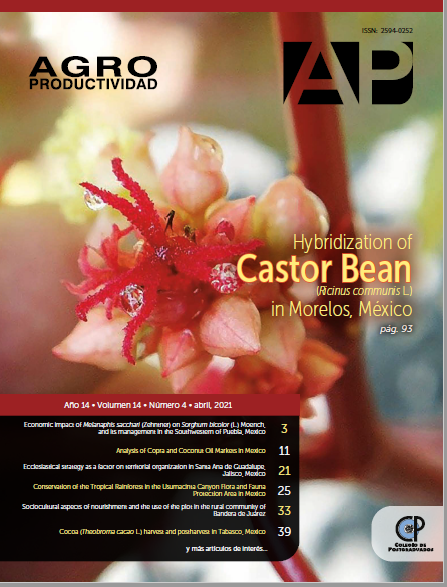Cocoa (Theobroma cacao L.) harvest and postharvest in Tabasco, Mexico
##plugins.themes.bootstrap3.article.main##
Keywords
Harvest, cacao, fermentation, drying.
Resumen
Objective: To characterize the harvest and postharvest of the cocoa management
system at La Chontalpa, Tabasco, Mexico.
Design / methodology / approach: The study took place in the towns of
Francisco Trujillo Gurría and Ernesto Aguirre Colorado de Huimanguillo, Tabasco,
Mexico. The study was descriptive and accounted for 51 producers and those
responsible for the cocoa profit centers. Producers were chosen through targeted
sampling. A survey on their harvest and postharvest was applied, in addition to
direct assessment in plantations and profit centers.
Results: The cocoa harvesting is manual. The producers cut the ripe and almost
ripe fruits, do not store and 58.8% of them do not break the fruit. With a “machete”
cut the fruit in half and manually extract the grains. The fresh grains are sold at a
profit. The cocoa is then fermented in wooden boxes, dried artificially, natural, or in
a combined way, and packed in “yute” bags for sale. Profit centers do not keep
track of their grain origin and make no selection or determine product quality.
Study limitations / implications: All producers harvest in the same way, but the
processes during post-harvest could differ at different collection centers.
Findings / conclusions: The harvest of cocoa fruits at different maturity and the
lack of storage causes a heterogeneous fermentation. The humidity level during
the drying process is empirically determined.

